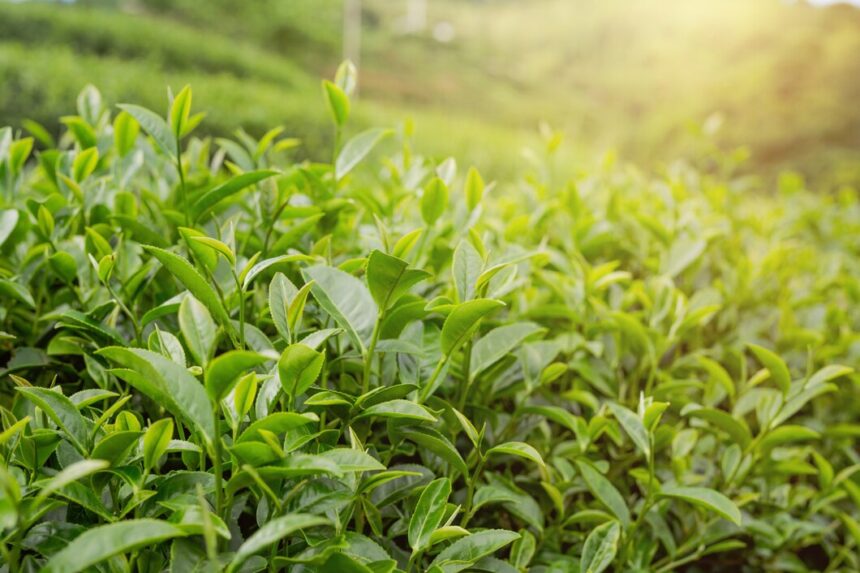Tea farming, with its rich tradition and economic significance, faces numerous challenges from pests, including the notorious Tea Mosquito Bug (Helopeltis spp.). These insects can cause significant damage if not identified and managed early. Here are ten early signs to watch for, helping tea farmers in detecting and dealing with Tea Mosquito Bug infestations promptly.
1. Leaf Damage:
Tea Mosquito Bugs feed on tender tea leaves, causing distinctive damage patterns. Look for small, round, or irregularly shaped feeding spots on leaves. These spots may initially appear as small yellowish patches or specks.
2. Leaf Curling:
Infested leaves often exhibit curling or deformation. This curling is a defensive response by the tea plant to feeding damage by the Tea Mosquito Bug.
3. Sticky Residue (Honeydew):
Tea Mosquito Bugs excrete a sticky substance called honeydew after feeding. This residue may attract ants and fungal growth, appearing as shiny, sticky patches on leaves or on the ground beneath the affected plants.
4. Black Sooty Mold:
A secondary indicator of Tea Mosquito Bug presence is the development of black sooty mold on leaves. This mold grows on the honeydew excreted by the insects and can further affect plant health and photosynthesis.
5. Stunted Shoot Growth:
Severe infestations can lead to stunted shoot growth and reduced overall plant vigor. Check for signs of abnormal growth patterns or reduced leaf expansion in affected areas of the tea bushes.
6. Presence of Adults and Nymphs:
Actively look for Tea Mosquito Bug adults and nymphs during routine field inspections. Adults are small (about 4-5 mm long), dark-colored insects with distinctive wing patterns. Nymphs are smaller, wingless, and typically pale yellow or greenish in color.
7. Damage on Buds and Tender Shoots:
Tea Mosquito Bugs preferentially feed on young buds and tender shoots. Inspect these parts of the plant carefully for feeding damage, which can affect future growth and yield.
8. Early Season Infestations:
Monitor tea plants early in the growing season, as Tea Mosquito Bugs are more active during warmer months. Early detection allows for timely intervention before populations build up and cause extensive damage.
9. Leaf Dropping and Abnormal Coloring:
Infested leaves may exhibit early dropping or abnormal coloring (yellowing or browning) due to feeding damage and stress caused by Tea Mosquito Bugs.
10. Damage Patterns on Surrounding Crops:
Tea Mosquito Bugs can affect neighboring crops such as coffee and other ornamental plants. Check for similar signs of damage on nearby vegetation to identify potential sources or spread of infestations.
Managing Tea Mosquito Bug Infestations:
Once signs of Tea Mosquito Bug infestation are identified, prompt action is crucial to minimize damage and protect tea yields. Integrated pest management (IPM) strategies including cultural, biological, and chemical control methods can be employed:
- Cultural Practices: Implement good field hygiene, including regular pruning and removal of affected plant parts. Maintain optimal plant nutrition and irrigation practices to promote plant health and resilience.
- Biological Control: Encourage natural predators and parasitoids of Tea Mosquito Bugs, such as certain species of spiders, predatory bugs, and parasitic wasps.
- Chemical Control: Use insecticides selectively and according to recommended guidelines. Rotate chemicals to reduce the risk of resistance development. Ensure proper application timing and coverage to effectively target Tea Mosquito Bugs.
By staying vigilant and proactive, tea farmers can effectively manage Tea Mosquito Bug infestations and safeguard the health and productivity of their tea plants. Early detection and integrated pest management practices are key to sustaining a thriving tea farming enterprise in the face of this persistent agricultural challenge.
Join 'Farmers Mag' WhatsApp Channel
Get the latest Farming news and tips delivered straight to your WhatsApp
CLICK HERE TO JOIN






